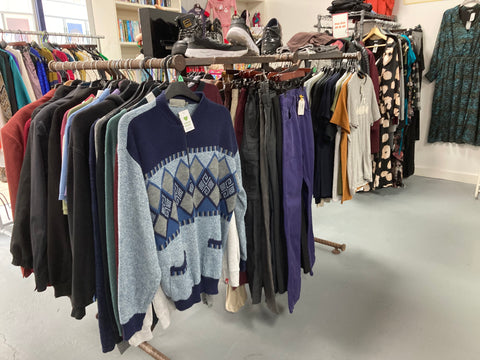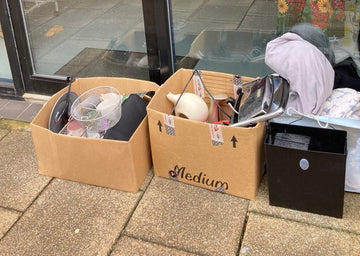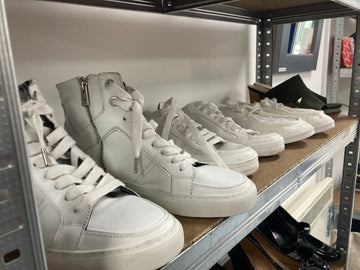What Could Happen if Sending Unsold Clothes to Landfill was Banned?
Well that's exactly what the European Union has done. Large businesses have two years to change up their act and stop destroying or landfilling perfectly good clothes. Smaller or medium sized businesses have 6 years.
This new legislation comes as part of a wider campaign by the EU to help tackle greenwashing and promote a more sustainable, circular fashion economy.
How this legislation actually gets enforced in each EU member state is yet to be seen, however.
So What Would Happen if Destroying Unsold Clothing Was Banned?
EU Ban on Destruction of Unsold Clothing
“It is time to end the model of ‘take, make, dispose’ that is so harmful to our planet, our health and our economy,” said the Alessandra Moretti, the Member of the European Parliament who took the lead in introducing this legislation.
Moretti continued: “Banning the destruction of unsold textiles and footwear will contribute to a shift in the way fast fashion manufacturers produce their goods.”
On paper, this sounds great. After all, landfilling perfectly good clothes is crazy and needs to be stopped.
But there are still questions about how this will actually affect the big fast fashion brands that are dumping the most clothing. One of the main questions is what they'll do with the surplus stock instead.
Here's What Is Actually Causing Textile Waste in the First Place
In the UK, there are 1.6 billion items of unworn clothing hiding in our wardrobes. Some would point the finger at the consumer here and say that we all buy too many clothes. But it is far more complex than that. The bottom line is that we produce too many clothes which then go to waste. Fast fashion brands quickly respond to the latest trends, pumping out ready-made garments and selling them cheaply at volume. Trends can change overnight thanks to social media, which means that even the latest lines of clothing can quickly become undesirable.
At this point, the clothes are taking up space, time and money. For most huge fashion brands it is far cheaper to dump clothes into landfill rather than actually dealing with them properly. Some of the designer labels have burnt and destroyed clothing partly to keep the perception of how valuable those clothes are.
If We Ban Destroying Clothes, Where Would They Go?
Let's say we ban clothes from being burnt or landfilled. What should the big fast brands do with them instead?
Charity or Second Hand Shop

Many fashion brands are already starting to pass their deadstock and returns on to charities. Which is why you might see a rack full of Zara items still with all their tags on in your local charity shop! This is a great alternative to shopping your favourite brands, with the cash supporting charitable organisations instead.
But isn't this justifying making too many clothes in the first place? It doesn't solve the original problem of overproduction, and sold at cheaper prices, it still encourages us to fill our wardrobes and allows fast fashion brands to keep pumping out new items. This eventually just passes the problem onto the consumer who ends up with a cluttered wardrobe and the need to pure old clothes before they truly need replacing.
Different Market
Another option for fashion brands is to move their stock and try to sell it in a different market. This involves costs as well as the carbon emissions required to ship the clothes internationally. These clothes could then find a home, but more often than not clothes are being sent on a long journey, only to still remain unsold.
Sold On and Shipped Abroad
Brands can cut their losses and and pass on the responsibility of selling their unsold garments to someone else. In a lot of cases, this results in fast fashion graveyards, such as in the Atacama Desert, Chile, but also in many sites across the world. In Ghana, the discarded clothes that pile up on their beaches have are called "obroni wawu" — dead white man's clothes.
Not only do these clothes create toxic landfills, but because of the sheer quantity of clothing that enters places like the Kantamanto market in Ghana, it can be resold so cheaply that local textile makers can't compete.
Rags

Rather than destroying clothes, brands may be forced to turn them into rag instead. Textile recycling can be great for older, worn out clothes where they simply have no further use. Although, all forms of textile recycling are considered as downcycling. This is because once clothing has been shredded and reconstituted it often cannot be recycled again and it cannot return to its original form.
Does this even make sense for brand new clothing though? Even a basic brand new t-shirt takes a lot of time and resources to grow and manufacture. So why would you go to those lengths just to shred it up and turn it something inferior?
Give Back to Communities
Unsold stock, returns and deadstock can be perfectly good to wear. So another route brands could go down is to work with local community organisations to help distribute clothing to those who need it the most. This could help a variety of people in need, providing the clothing is appropriate.
Create New Upcycled Collections
Upcycling clothing is a great way of transforming garments into something new. It would take some creativity to use as much of the original garments as possible, though. Of course, fashion brands could still run into the same issue of failing to sell through upcycled items.
Repair Damaged Clothes or Sell as 'Seconds'
Brand new clothing can be damaged or flawed, which is quite rightly returned by customers. But 23 million returned garments were destroyed in 2022 (UK) - this number includes items that were returned because they were the wrong size!
Some garments may be damaged beyond repair, and that's ok. These can ideally be sent to textile recycling if they are the right material. But this is a whole new complex issue because often clothing cannot recycled if it is made from a blend of synthetic and natural materials.
But the clothes that can be repaired or salvaged, should be. The most straight forward way would be to sell all damaged or imperfect garments as 'seconds' for reduced prices. People still love to shop from their favourite brands and would be willing to accept flaws in items. If the price was right, they could even do the repairs themselves or find someone to do it for them.
What might require more work is to have some way for brands to repair items in-house. This also opens the door for repairing and maintaining the clothes they have previously sold.
What Should Fast Fashion Brands Do Instead of Sending Perfectly Good Items to Landfill?
To go back to what MEP Alessandra Moretti said at the top of this article, wholesale change is needed in the way that clothes are produced and consumed.
A more circular economy is needed. It begins by stopping overproduction of cheap, flimsy clothing and instead focusing on clothes that are built to last, to be worn over and over again.
End of product life needs to be thought about too, so clothes should be designed to be repairable and recyclable to 'close the loop'.
What might be harder to achieve is a greater cultural shift towards buying much less, and wearing more of what we already have.
And What Can We Do As Consumers?
Even individuals can have an impact in saving clothes from landfill. Every garment saved counts.
- Keeping and enjoying clothes for longer is the most obvious solution.
- But what is more tricky is repairing, mending and altering garments so that we can do that. You could budget more for repairs, or take a local sewing class and learn how to do it yourself.
- Equally we need to be able to resist tempting sales, new product launches and trends. Easier said than done. But unsubscribing from fast fashion email lists is a good start.
- Buying preloved instead of brand new means you are directly rescuing an item from landfill and reducing the demand for new garments.
- Pass on clothes. Even when you fall out of love with a dress or jacket it doesn't spell the end of its life. Give it to a friend, sell it yourself on eBay, or even use a free clothes recycling service like SWISH.plus.
- Use clothes swaps. Similar to the above, clothes swaps can be a great way to change up your wardrobe, rehoming old clothes and finding new clothes for free.
- Rent clothes if you just need something for a special occassion.
Circular Fashion Future: Zero Unsold Items Landfilled
So to sum up, what benefits could there be if we fully embraced circular fashion? Here's just a few we penned, can you think of more? Leave a comment below.
- Existing clothes are worn for longer, so we need to buy clothes less often. Better for wallets and the planet.
- Less carbon emissions from the whole process of making and shipping clothes.
- Surplus stock can help the needy.
- Jobs created for mending, altering and upcycling clothes.
- No pressure to follow fashion trends, just your own sense of style.
Read More: Ten Great Reasons to Shop Preloved
Rags Photo Credit: Photo by Kamran Gholami from Pexels.




